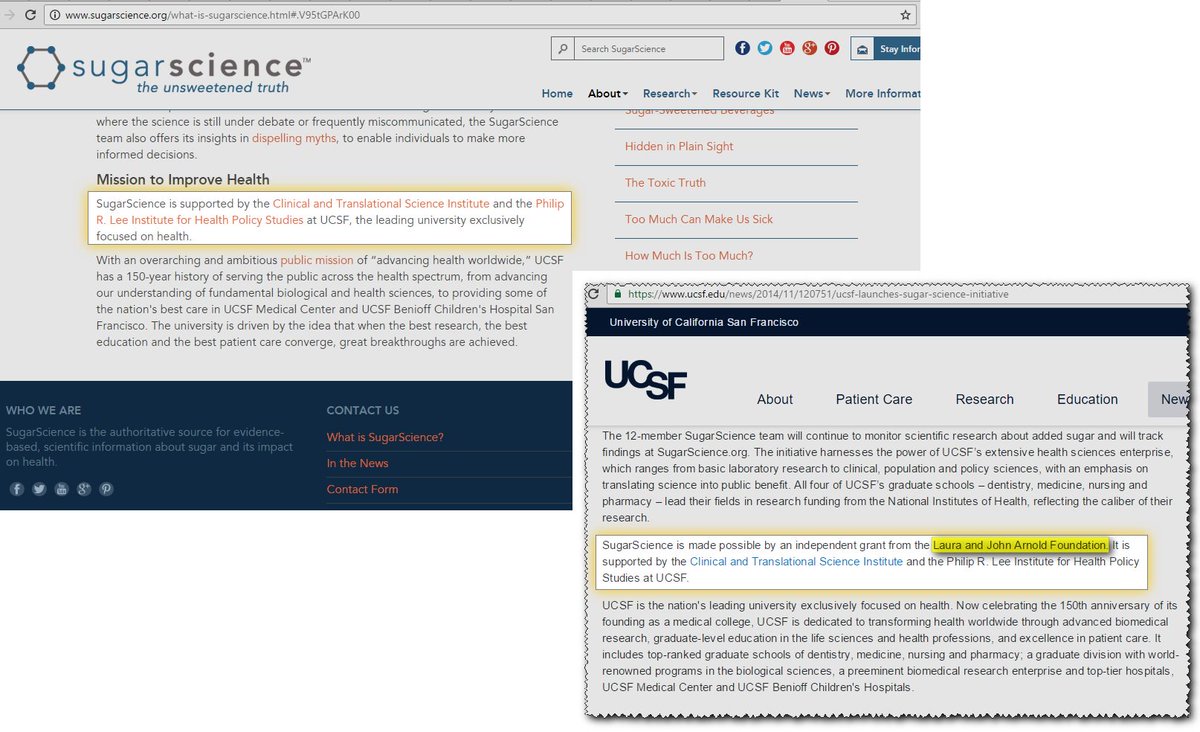The Slimey Truth About Sugar Slammers ~ Links & Background
This was initially going to be a monster post, but I'm still struggling to organize it all! The things uncovered at every turn last week and continuing through this one are astounding, and the hypocrisy of those touting this as some "smoking gun" of great importance is seemingly boundless. This was all still swirling in my head when I went on Angelo Coppola's Latest in Paleo podcast ... in retrospect not a good idea when I'm wound up!
I decided to break this in two to publish something up. This installment will be linking to background to get something that blogging rock rolling on this. Unless you've been living under a rock, this happened in the JAMA Internal Medicine:
I decided to break this in two to publish something up. This installment will be linking to background to get something that blogging rock rolling on this. Unless you've been living under a rock, this happened in the JAMA Internal Medicine:
Sugar Industry and Coronary Heart Disease Research A Historical Analysis of Internal Industry Documents
Cristin E. Kearns, DDS, MBA1,2; Laura A. Schmidt, PhD, MSW, MPH1,3,4; Stanton A. Glantz, PhD1,5,6,7,8
The crux of the matter is that a half century ago the Sugar Research Foundation paid three scientists a combined sum of ~$50K (2016 USD) to write a review article in the NEJM. This fact was not disclosed at the time. We are led to believe that this is why, all these decades later, the US Government recommends we get at least half our calories from sugar. What? No? Not true? You'd think that were the case to listen to those who went bonkers over this! At this point I have an almost visceral reaction whenever anyone starts in on that whole "everything we were told was wrong because Ancel Keys" thing because it's just too much. As corrupt as anyone thinks science, industry, academics/peer review, the media, and government could possibly be, this scenario just doesn't hold water.
I highlighted that which I did in the article info graphic above for a reason. Almost immediately in the introduction, I sensed an agenda afoot:
In the 1950s, disproportionately high rates of coronary heart disease (CHD) mortality in American men led to studies of the role of dietary factors, including cholesterol, phytosterols, excessive calories, amino acids, fats, carbohydrates, vitamins, and minerals in influencing CHD risk.(1) By the 1960s, 2 prominent physiologists were championing divergent causal hypotheses of CHD (2,3) : John Yudkin identified added sugars as the primary agent, while Ancel Keys identified total fat, saturated fat, and dietary cholesterol.
I'm going to give you one guess as to what references 2 and 3 are there and I'm going to guess my readers have a high success rate here! (answer on bottom of post). I didn't notice anyone familiar amongst the authors however, and didn't have time to poke around. Ahh the rocks beds of the IHC ...
A couple of links and a Hat tip:
 |
Evan Allen (@EAllen0417 on Twitter) deserves a major hat tip for this tweet:
Imagine my surprise when I went looking to find that indeed, the Laura & John Arnold Foundation is the sole funding for UCSF affiliated Sugar Science. You won't find this disclosed in any such transparent manner (more on this in Part II).
There is Cristin E. Kearns and Laura A. Schmidt ... and Robert Lustig. No conflicts of interest to disclose you say? I have quite a bit more on this front!
Previous Asylum Readings:
I have written a lot of content on nutrition science history and various conflicts of interest. Most of this post will focus on the rank hypocrisy of those trying to portray this as some sort of unique, nutritional time continuum bending scandal. The two posts of most relevance are linked below, and if you're newer to the blog, they will provide a lot of background.
- Who Should Fund "Science" (March 2015)
I've written a few articles on the shroud of uncertainty regarding funding and advocacy by personalities like Nina Teicholz, Gary Taubes, Jeff Volek, Stephen Phinney, David Ludwig, Zoe Harcombe, etc. I'll hopefully come back to add more links when I have more time. But pertaining to LJAF funding and the LACK of transparency this funding vein results in:
- Revisiting NuSI, Its Funding by The Laura and John Arnold Foundation, and Its Mission (Oct. 2015) If you do nothing else, watch the video below in light of the fact that Attia just walked away from NuSI, and NuSI was nowhere to be found touting the results of the first funded study(Hall) published recently.
- Nina Teicholz, The BMJ, The Nutrition Coalition and nutrition science's George Soros: The Laura and John Arnold Foundation (Oct. 2015) In the end, it turns out LJAF paid the BMJ directly to commission Teicholz to write an article. The Nutrition Coalition unveiled after their assault on Capitol Hill has scrubbed Teicholz from its website, and you'd hardly recognize it as the same group. The behavior here is not even in the same ball park of the worst offenses alleged against Hegsted.
If industry funding in furtherance of their interests is to be scrutinized, as it should be, industry funding and private funding of studies aimed to undermine that same industry ought to be equally scrutinized. Disclosure of bias and funding is more critical here.
MUCH more to come ....




Comments
Post a Comment
Comment Moderation is ON ... I will NOT be routinely reviewing or publishing comments at this time..